Talking Stitching Cromwell
Last Thursday, I gave a paper at the Material Histories: Objects and Objectives Conference by the Material Histories Group at the University of Brighton. I had the opportunity to share aspects of my creative practice arising from my work stitching Hilary Mantel’s Cromwell Trilogy, which I have been working on for over a decade.
It was nice to be back in an academic setting after a number of years, and particularly good to be among a group of very creative individuals with a wide range of interests and expertise. I pretty much gave up on striving for an academic career five years ago, having become completely disheartened by post-PhD life, but this morning I read a piece by
(whose Studio Notes are among my favourite things on SubStack), which included these wordsAcademia was a path I might have stayed on for longer, but it was not to be. My previous successes and awards are not forgotten but gave me the confidence to say yes, I can take an idea and shape it into something beyond myself.
Cathy’s words sum up how I now feel about Stitching Cromwell. My project has certainly moved beyond myself and it is now so huge that I often forget how much I have physically brought into the world. In my conference paper, I was only able to scratch the surface. In the weeks running up to it, I spent a long time thinking about which pieces to include, and which to leave out. When I start to look the material presence of Stitching Cromwell, I cannot help but feel astonished about the amount of stitched work both in progress and completed - and it’s very odd to think that I made it all.
I decided to focus on the impact of material history on the development of my practice between 2020 and 2025 - from a (forced) reliance on online sources, through engagement with objects, to a growing use of archival documents.
For context, I started by talking about the act of stitching in Hilary Mantel’s Cromwell trilogy. Many of the delegates had read one or more of the novels, and hopefully I may have persuaded some of those who haven’t yet had that pleasure to pick up the books. I talked about my analysis of the act of stitching in the Trilogy, who sews, what they sew, the differentiation of types of needlework, and the tools used. And of course I talked about Cromwell’s knowledge of cloth and his appreciation of the skill of needlework.
I then moved on to my own work stitching the Trilogy. I started the project in a small way with small pieces back in 2014, but I know I wanted to do something “big and ambitious” (as I described my intentions in 2014). My serious work started in 2020 during the Covid-19 pandemic when I stitched a 46-ft long piece setting out the progress of Wolf Hall, largely to the sound of new recordings of the audiobooks read by Ben Miles who played Cromwell on stage in the RSC productions. I was keen to give credit to the inspiration I have drawn from the incredible creative collaboration between Hilary Mantel and actor Ben Miles.
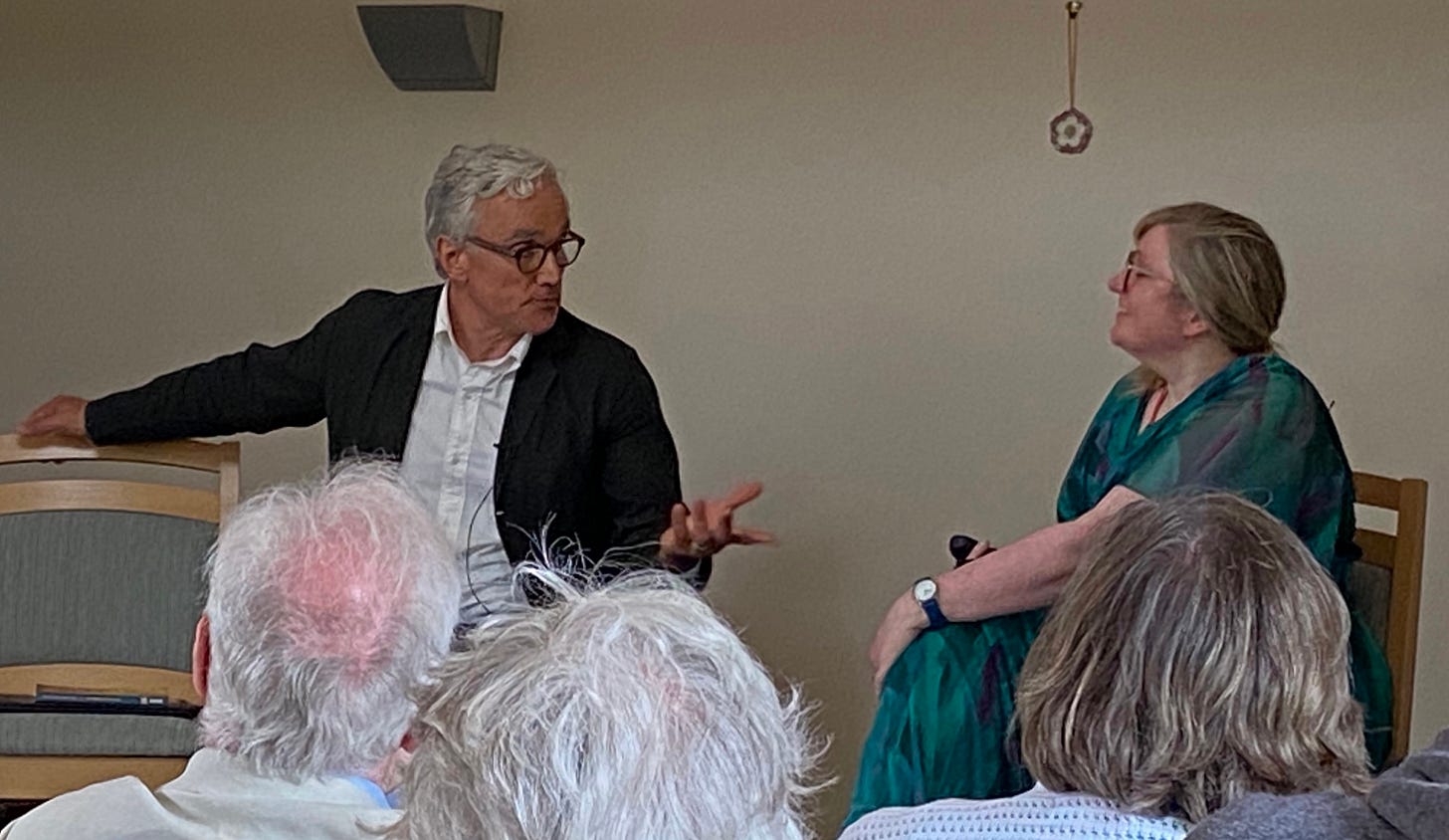
When stitching the first Wolf Hall quilt, I could only access online and paper sources, and worked solely at home alone. The environment of the pandemic restrictions in 2020-2021 - as well as my self-imposed boundaries for stitching the quilt - resulted in a final piece that (to me) comes across as quite restricted, despite its size. As a record of the time it was made and my incredibly intense stitching experience it works, but I am dissatisfied with the overall piece. However… in my paper I mentioned that its 46ft length means that I have only seen it unrolled fully twice since its completion, and delegates wanted to see it. So it was unrolled to full length, snaking around the conference room like a stretch of the River Thames, with numerous people holding it up while others walked around it. So I have now seen it three times.
I then discussed the opening up of the project in 2022, once - post-pandemic restrictions - I was able to get out to places associated with Cromwell. Seeing physical objects unlocked a new way of working. I realised that, rather than stitching each volume of the trilogy as discrete pieces, I could work more thematically. Themes of Anne’s face, symbols of queenship, weeper tombs, and the role of the River Thames are just some of the themes I have stitched.
Moving on to 2024-5, and my current approach to Stitching Cromwell, I discussed my engagement with the historical record and use of archives. Documents relating to the “real” Cromwell are informing a further opening up of my stitchery.
I started by talking about Cromwell’s own quilt - “my Quylte of yelow Turquye Saten” - an expensive textile listed in his will. I explained my (as yet unsuccessful) quest to trace what happened to it after all Cromwell’s goods were seized under an Act of Attainder in 1540. Unlike some of his other possessions, this quilt doesn’t seem to have made its way into the Royal Wardrobe. Despite much searching I can’t trace this ghost textile after 1529. I explained how searching for the quilt had led me to work closely with letters sent to Cromwell, and I then moved on to my latest piece: the Cromwell Textile Cloth.
The Cromwell Textile Cloth is based on a legal document written by Cromwell in 1527: a list of fabrics. This inventory was drawn up after the death of the original owner, a Florentine merchant, who had left his goods in England. Velvets, satins, tinsels, gold threads are listed, and I have reproduced Cromwell’s handwriting on a large scale to embody my continuing fascination with Cromwell and his knowledge of textiles.
I don’t have a photograph of this latest piece yet - I only finished stitching it at 11.00pm the night before my paper - but I will write it up properly in the not-too-distant future. For now, here I am trying to hold it up, feeling the weight and the unwieldy nature of Stitching Cromwell.


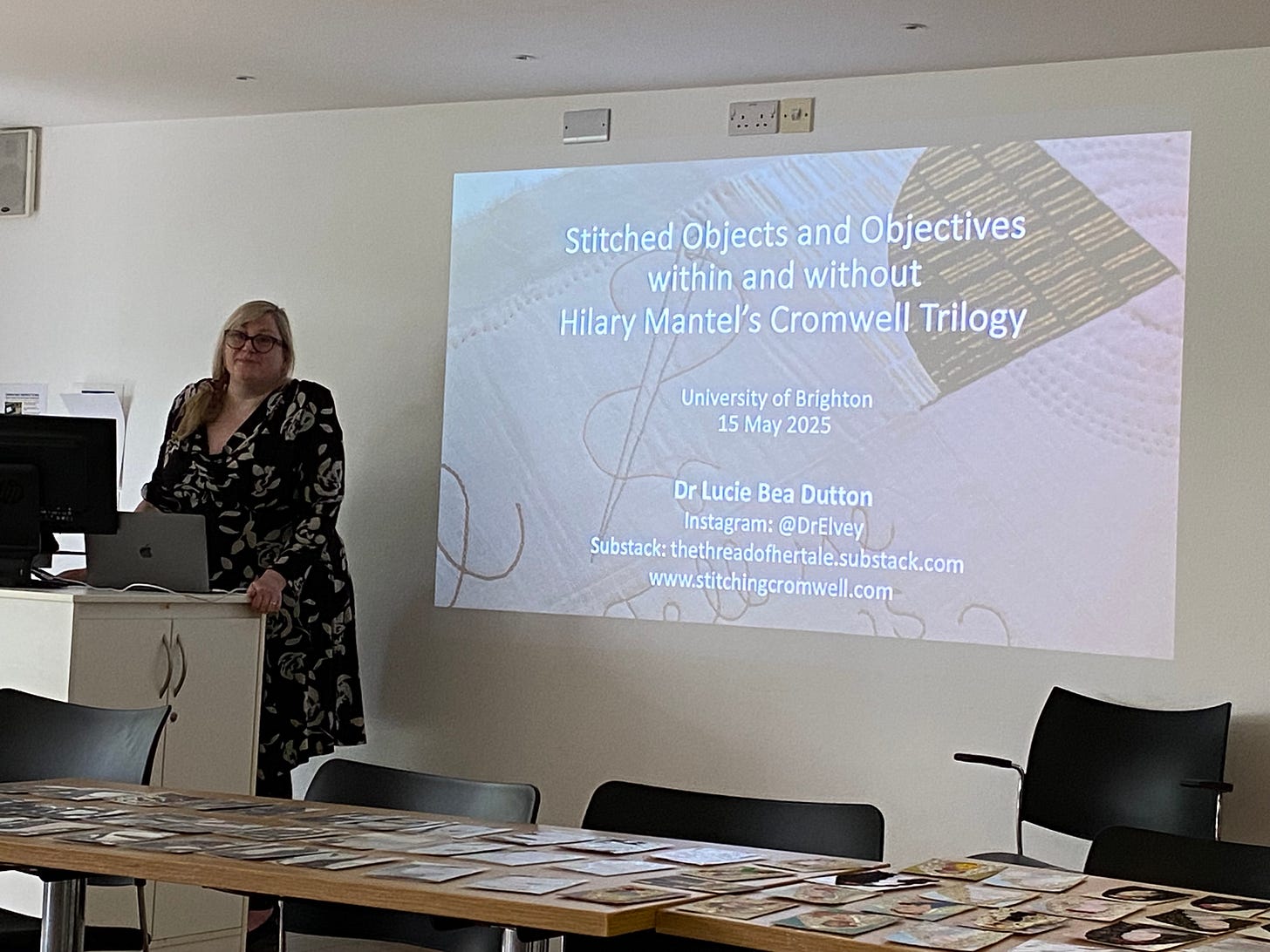
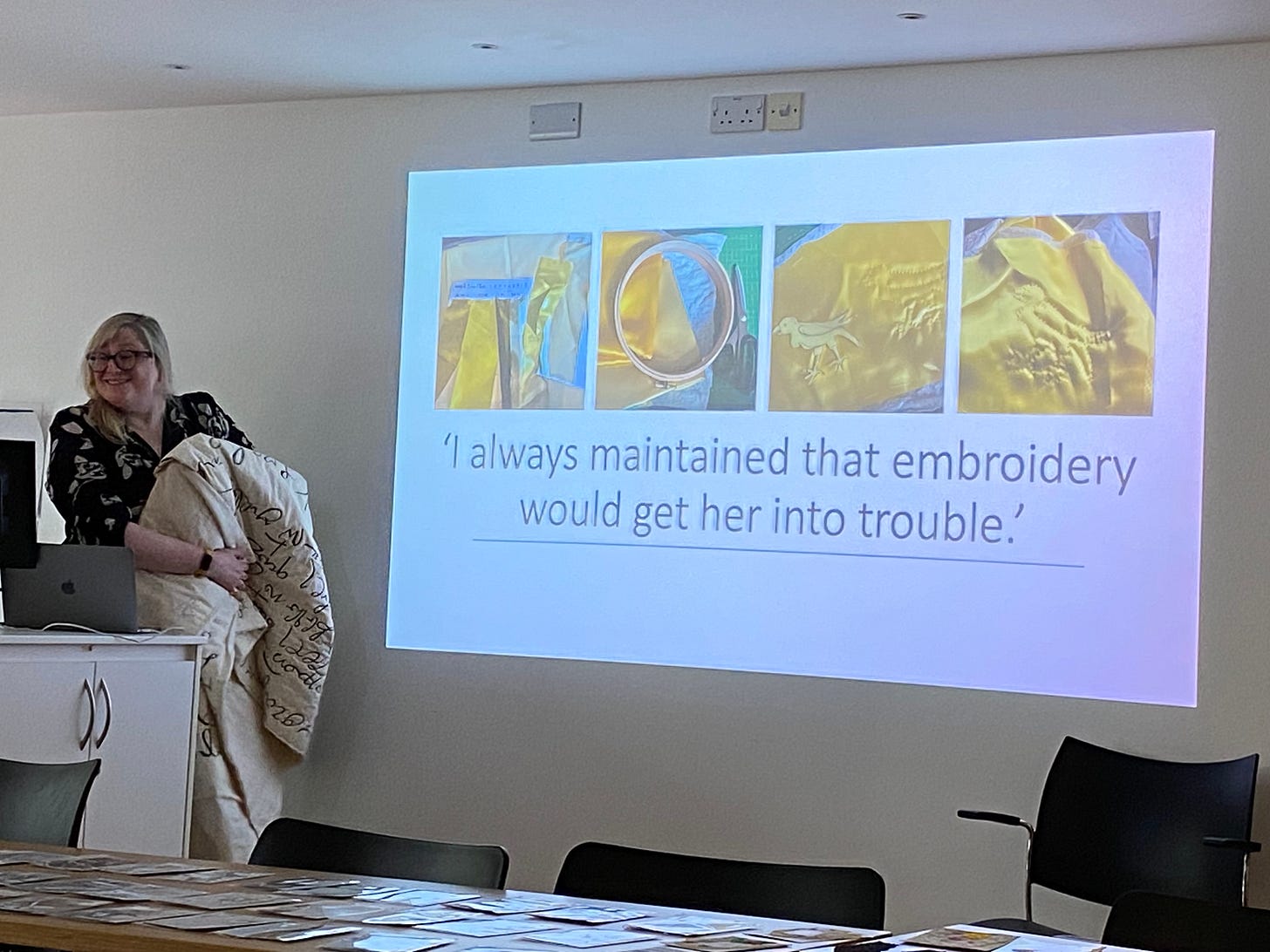

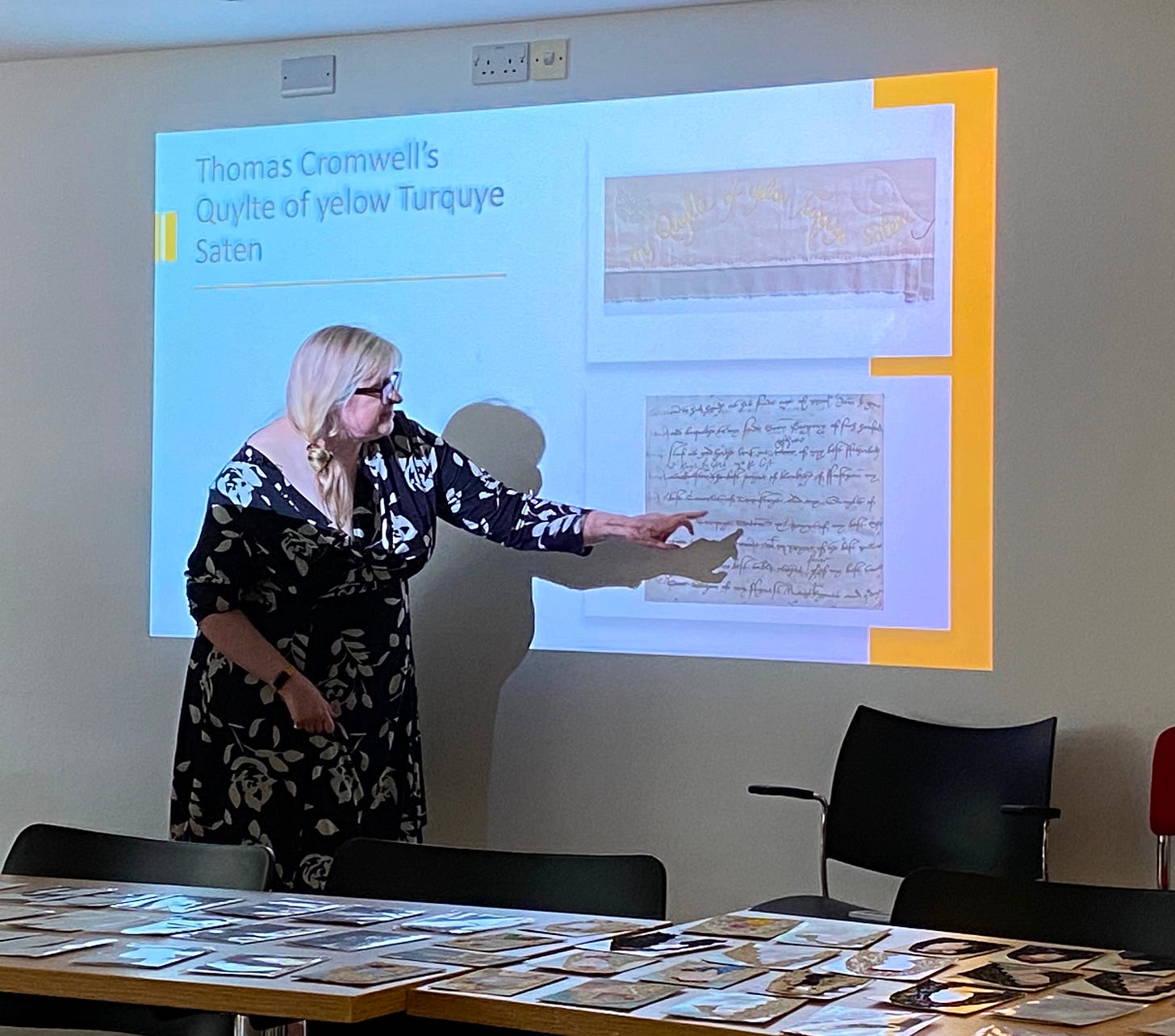

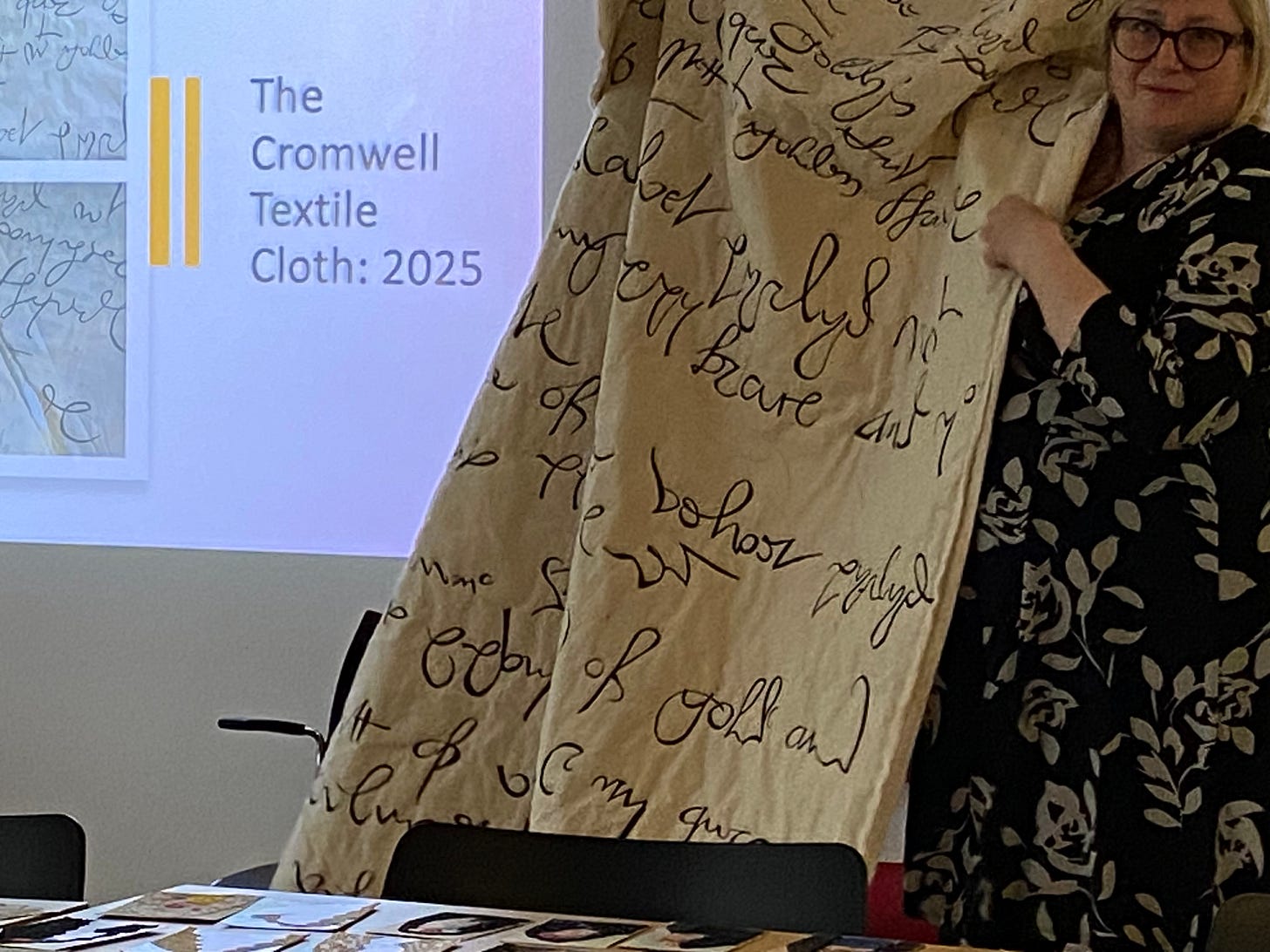
Stitching Cromwell turned into an epic some time ago. I think you need a new word, especially now I've seen that last photo!
Congratulations Bea! Your work is such an inspiration. And you keep digging deeper with this unique intersection of your textiles, the archive and Mantel's writing. One day, you're going to track down that Quylte of yelow Turquye Saten!